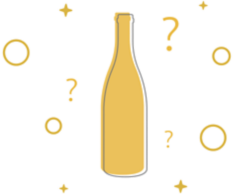The canned wine category seemed to explode overnight – figuratively not literally. I remember drinking my first canned still wine, a Pinot Noir from Oregon, at a food truck park in 2021. The wine wasn’t complicated, but it was perfectly quaffable at a picnic table surrounded by friends and salty food, and the price was right. It seemed so novel and yet, so obvious. Why hadn’t the wine industry thought of this sooner? In the U.S., we’ve been drinking beer from cans since 1935, and maybe that’s already the answer.
U.S. wine drinkers like their bottles. The vast majority of wine consumed in the U.S. comes from a glass bottle, a fact that is driven by the buyer’s preference for this aesthetic. Yet 95% of all wine produced in the world is intended for early consumption, not requiring the gentle degree of oxidation provided by cork-sealed bottles. Glass bottles are expensive to produce and ship, they are the largest contributor to carbon emissions in the wine supply chain, and expensive to recycle on the back end. Sure, bottles look classy. It’s never been my dream to have a cellar full of cans. But the reality is that I live in an apartment with an 18-bottle wine fridge and nothing survives there longer than 3 weeks. That’s already longer than the average time wine is stored in American households. With a shelf-life of 18 months, cans are an excellent, eco-conscious alternative to traditional glass bottles.
Once we overcame the “can stigma”, new products popped up everywhere. Canned wines now account for nearly $200 million in annual sales in the U.S. With attractive designs targeted toward younger audiences, cans seem fresh and playful. It’s an opportunity for adventure. Clean-up is light and simple with no risk of broken glass to ruin your pool party. The takeaway is it’s all about experiences. Even in 2020 which we’ll call experience-poor, the canned wine category increased 61% in dollar sales. This trend shows no signs of slowing.

There's So Much More
The serving sizes offer convenience for those times when you don’t want to commit to a full bottle. Even though single cans have been prominently displayed in cold boxes for the last several years, technically these weren’t all legal until the TTB approved new sizes for wine packages at the tail end of 2020. (Of course, 375 ml and 187 ml sizes were already allowed.) Before official approval, some producers skirted the issue by boxing 3 or 4 cans together, each containing 250 ml, which added up to regulation sizes of 750 ml or 1 liter. Retailers then broke down the boxes, which clearly stated “not for individual sale”. It wasn’t a priority for the TTB to crack down on this practice in stores, and it allowed consumers to dip a toe into the new category with minimal investment. It’s the perfect impulse purchase, reinforced by eye-catching designs.
This was the perfect way to introduce cans since many people are skeptical of wine in a new package. No one wants to feel taken advantage of by a gimmick, and the association of cork-finished bottles with “good” wine has been fairly well hard-wired into the American zeitgeist. But what makes a wine good? For me, it’s a sound product (free from flaws), one that has a strong quality-price ratio, and is appropriate for the setting where it’s consumed.
I haven’t conducted extensive enough field research to state definitively that canned wines are more sound than other forms of packaging, but I have never tasted a canned wine that is corked (yes, it’s possible to have cork taint (TCA) without a cork present!), none have shown evidence of the spoilage yeast brettanomyces or high volatile acidity, the most common wine faults. Cans are also impervious to oxygen and UV light. Sound wines? Check.
Next up is the value. Most canned wines range from $5-$10 per 250 ml unit. The category centers around rosés, and light/fresh/fruity whites & reds. The equivalency is paying $15-30 per bottle – pretty much standard for those styles today. Yet with the tremendous growth in the category, it’s also becoming increasingly diversified. The eco-friendly nature of cans is an intuitive fit for organic and natural wines. You can now find AVA specific examples that offer greater complexity without a hefty price tag. Strong value? Check.
Final criterion: the setting. We’ve already listed the range of activities that make cans an appealing choice. When you’re engaged in an activity, wine is the accompaniment, not the main event. Have you ever opened a special bottle at a party expecting a big reaction, only to find it gone in 30 seconds without thought or comment? Did they even taste it?! When you’re having fun with friends – doing something – the wine doesn’t have to command all the attention. It’s there to enhance your already great day at the beach/game/concert. All boxes checked.
This is not to imply that I will someday fill my aspirational future cellar with canned wines. Nor have I waxed poetic over the nuances and layered complexity of a canned wine. But what’s wrong with that? Didn’t you glaze over at the mere mention of me waxing? Not everything in life needs to be complicated. Canned wines are, simply put, good options for good times.

